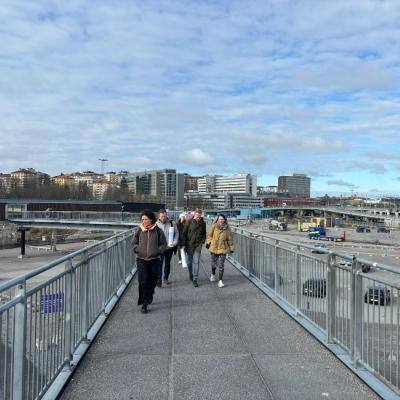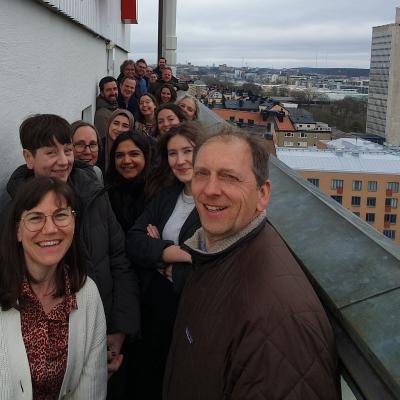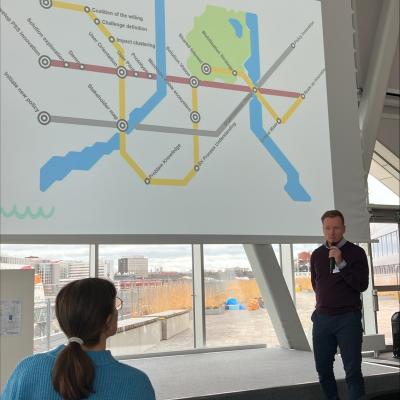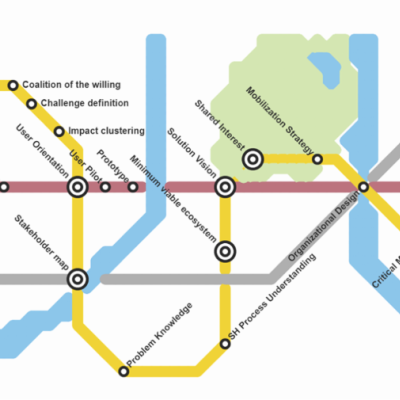In mid-April, the project partners came together in Stockholm for their 6th Consortium Group Meeting and exchanged experiences from the pilot areas. A special focus was placed on the replication partners and on the "Nordic Case".

Several Nordic actors, cities and harbours have expressed an interest in the Connected River project and the methods that are developed. The “Nordic Case” is describing challenges that many Nordic cities and harbours share.
On the first day of the event, about 40 local and European partners were welcomed to Saturnus conference center at Slussen in Stockholm's south island Södermalm. The day started off with keynote speeches from the Ports of Stockholm and Trafikverket (the Swedish Transport Administration) and then the Nordic case was introduced by Ecoloop and expemplified by representatives from the Municipality of Ystad who shared their challenges and perspectives.
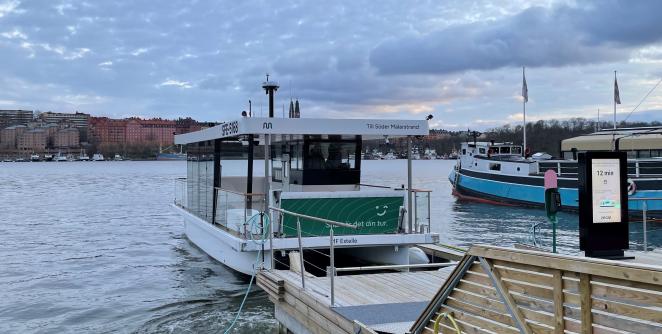
Zeam Ferry
After an energizing dance break in the spirit of Bruce Lee's timeless wisdom "Be like water” it was time for a presentation and demonstration of the first autonomous and electrified public transportation ferry “Zeam” (Zero Emission Autonomous Mobility).
The goal of Zeam is to improve the flow of urban life and to create an environmentally and economically sustainable mobility concept on water in urban areas.
Field visit to Stockholm Royal Seaport
Stockholm Royal Seaport is the largest urban development area in Sweden, which will transform a port area into an attractive and healthy city hub. It aims to build 12,000 new homes and 35,000 workplaces, which has started with a new passenger terminal at the Värtapiren pier. This terminal formed the perfect location for our project meeting. It provided a scenic view over the water and development area. The development plan and its challenges were presented by Ports of Stockholm, Stockholm City and Alecta fastigheter. These challenges were illustrative of the types of challenges that occur in the Nordic case. For example, how to keep the area liveable during the transformation phase itself, when a lot of construction work is going on. During the site visit we could see and feel the size of the construction going on ourselves.
Metro map for systemic innovation
In Connected River we work on a Flow Forward Approach, which is a new way of innovation. Our approach partners (Amsterdam Management School and InnoValor) have created a metro map, which guides its users through systemic innovation. Their experience is that you have to work on systemic innovations based on three dimensions:
- Ecosystem building (yellow line)
- Short cyclical innovation (red line)
- Organisational design (grey line)
If you work on one dimension on its own, it is insufficient. For example, because many necessary conditions are not being met. Project partners and the Nordic organisations are the first users of the prototype of the metro map. Behind each metro station there is a set of methods to work on it.
But how can we tell you what is the right metro station for you to start and get off? To answer that question we have analysed patterns that were used in the Connected River pilot areas. These patterns were based on what the host partners actually did, for example which activities they did and which tools they used. For each sub pattern, a goal and set of activities has been defined. This is accompanied by a case study example and tips and trick. An example of such a sub pattern is agenda setting, which is about finding a shared problem and creating a coalition of the willing around that problem.
Getting started with the metro map
The partners were asked to choose a sub pattern that they have experience with. Their task was to reflect on its description. And share their knowledge about questions like:
- Did you follow the steps?
- Which other steps did you take?
- Do you know other tools?
- Which tips can you give?
After this reflection, they worked on an plan for the challenges that they now face. Based on their challenge, a sub pattern was proposed to help them move forward. This allowed them to plan the next actions for their pilot area.
Upscaling our work
At the Mid Term Event we will start with scaling up our work. This will be the key activity for the second half of the Connected River project, led by LIHH. We now already looked forward to it. What do we mean with upscaling? It is about implementing the most viable solution for each pilot area as a beta version, and developing it towards full implementation.
We understand a beta version as a technically functional prototype that shows that the solution can work. These solutions will be jointly tested and implemented by the pilot areas. To this end, we have started early on with identifying synergies in solutions between pilot areas.
In our meeting, we evaluated how the exchange between pilot areas based on the synergies is taking place. This showed that there is quite a lively exchange between pilot areas already, including physical visits. HPA, City of Nijmegen and ecoloop have met each other around the Nordic case. There is also a lot to learn from cities in the AIVP network, like the port transformation in Seville (Spain).
Another relevant example is Oslo (Norway), who have developed a process to engage with 14-15 year olds that used to cause nuisance at waterfront. AIVP wants to do a benchmark in order to extract key lessons from their large stock of good practice examples. Read more about the AIVP benchmark here >>.
Now we move straight on to the preparations for the mid-term event which will take place in Antwerp at the beginning of October.
Source: Ecoloop and Rijkswaterstaat

